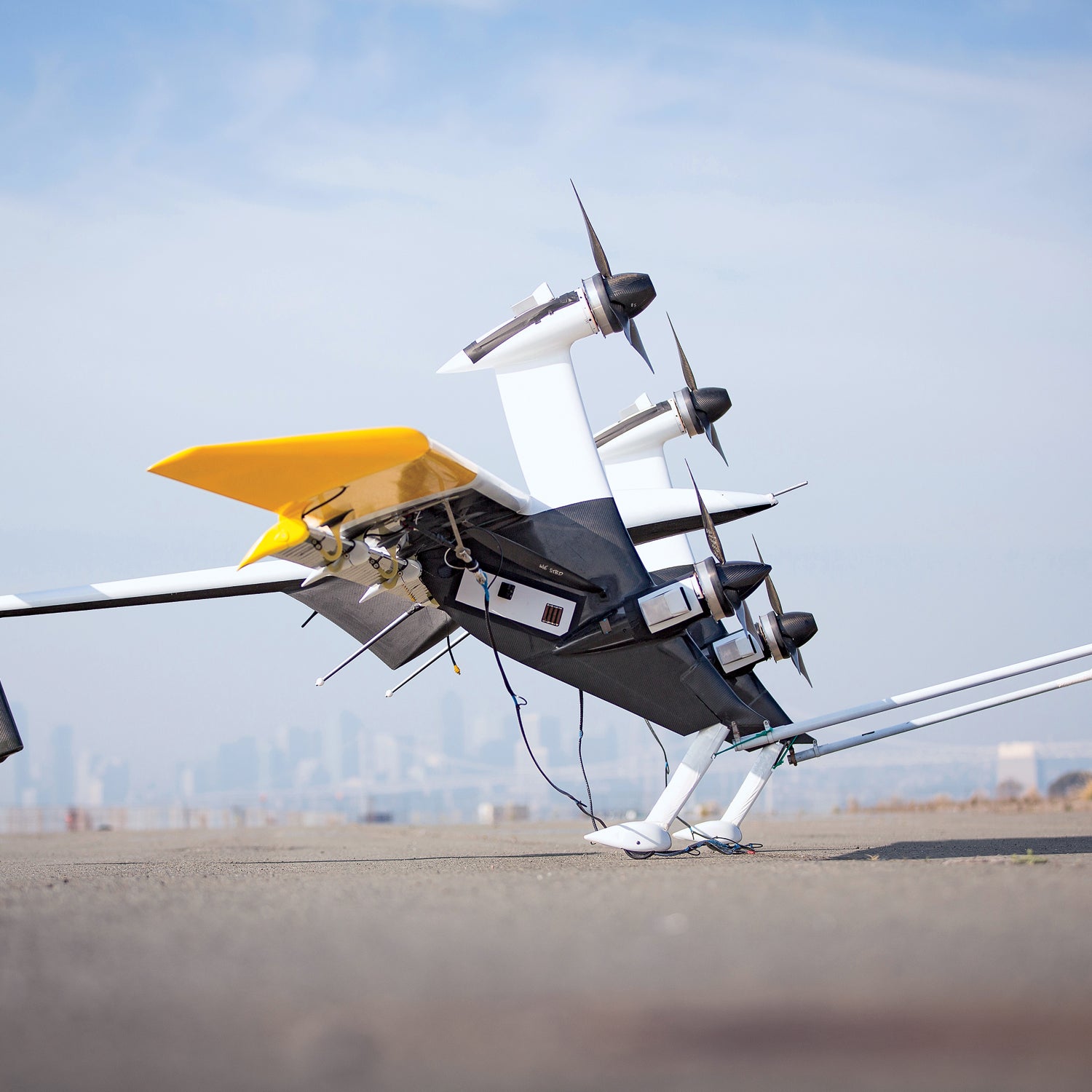Ten years ago, kiteboarding pioneer Don Montague hatched a plan to become the fastest person to circumnavigate the globe. His idea was to use a 65-foot catamaran, cabled to a large parafoil, that would fly some 250 feet in the air. Essentially, he would supersize the typical kiteboard rig. A few months into the project, he gave a preview to a couple of kitesurfing friends, Google founders Sergey Brin and Larry Page.
“I was showing them how much power was actually available at higher altitudes, and I said, ‘Look, I can even generate electricity,’ ” says Montague, who had worked with a Dutch astronaut to build a kite-power prototype. “They said, ‘Don, don’t waste your time sailing around the world. Let’s save the world.’ ”
So Montague and his partners set about designing a wind turbine that would be held aloft like a kite but use small propellers to generate electricity. Montague named the new endeavor . At the outset, Google in the effort. Last May, Makani was sold outright to Google X—the R&D lab that created Google Glass—for an undisclosed amount. And this summer, backed by the company’s enormous resources, Makani began building a second-generation, 600-kilowatt wind turbine, which could one day generate enough electricity to power 300 homes—as many as the largest modern land-based turbines.
Makani’s big idea rests on a simple concept: wind gets stronger—and more dependable—the higher you go. Dozens of companies around the world are working on design formulas based on this principle, everything from a propeller system that stays aloft with helium, like a blimp, to a large drone-like quadcopter with spinning blades that produce energy.
One of the primary hurdles in technology races like this is capital, since most investors consider the odds of failure too great. But with Google’s deep pockets, Makani is by far the most likely outfit to usher in a new era of wind power. “We are able to go faster, and we have a larger appetite for risk,” says Damon Vander Lind, lead engineer at Makani. “Perhaps we will fail. But if we succeed, the value dwarfs all the potential failures.”
Some alternative-power advocates are ambivalent about Google leading the way to a renewable-energy future, but the wind sector needs all the help it can get. Proponents like to boast that the resource could supply the U.S. with 20 percent of its electricity needs, yet the industry has foundered in recent years, beset by political and logistical woes. A big part of the problem is that current land-based designs are expensive to build and clunky to transport. That’s where Montague’s high-flying concept comes in.
“While classic turbines are facing physical and economic limits, airborne wind energy shows interesting potential,” says Roland Schmehl, a professor at the Netherlands’ Delft University of Technology, who’s working on an electricity-generating inflatable wing called .
Makani is currently testing a 20-kilowatt airplane-inspired turbine, which circles in the air like a parafoil. Made with 27-foot-wide carbon-fiber wings, it can reach heights of up to 1,300 feet, compared with a maximum 500 feet for land-based turbines. When the wind isn’t strong enough to keep the wing aloft, a docking station reels it in. Like those on the ground, airborne models would likely be combined into groups of dozens or even hundreds. To maximize -potential power, Makani’s turbines would need to fly at a minimum of 500 feet—which could require amending current FAA regulations.
As for Montague, after the Google X acquisition, he bowed out of the company and got back to building that kite-powered catamaran to sail around the world. He’s confident Makani will be the first to market with a commercially viable airborne wind turbine, which he says is still at least five years out.
“Is it a race? It doesn’t really matter who’s first,” Montague says. “If anyone is in production in five years, then we all win.”


